 May 2009
YG Acoustics: The Back Road
to Colorado
by Marc Mickelson
All of the people who make their living designing and building audio components today
got their start somewhere, and many of their stories have similar details: a parent who
was interested in music reproduced well or engaged in DIY audio, hours spent in a basement
or garage tinkering, a trip to an audio dealer to find out if that very first amplifier or
speaker has a commercial future.
Yoav Geva, the head of YG Acoustics, has a rather different story. While living in his
native Israel, Yoav wrote code for digital-signal-processing software. Interested in music
-- he's a keyboard player from a musical family -- he began work on a program to optimize
the design of loudspeakers. He was dissatisfied with off-the-shelf programs, so he wrote
his own that optimized both the frequency or phase domains at the same time. YG Acoustics
was founded in Israel, but, with the help outside investment, Yoav and his family moved to
Arvada, Colorado, a Denver suburb, in 2004 in order to grow the company further, believing
that the US was the ideal launching point for a company that makes extreme-fidelity
speakers.
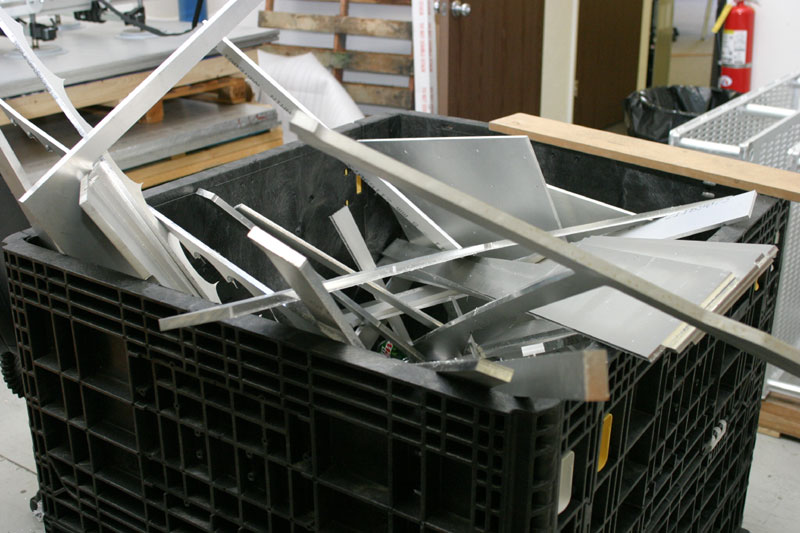
Heavy metal: the scrap bin at YG Acoustics.
In 2009, YG Acoustics has seven employees and a production capacity of 100 pairs of
speakers per year. While it would be possible to outsource some of the work, Yoav and his
staff believe in doing everything possible themselves. In this regard, YG Acoustics
machines all of its cabinet parts, builds all of its crossovers, does all assembly and
even tests every speaker it sells in its 10,000-square-foot factory. But this laundry list
of tasks doesn't begin to explain the amount of work involved in building a YG Acoustics
speaker.
Made in Colorado
Each speaker begins as slabs of aluminum that are milled to shape on the company's
$300,000 Portatec CNC router. These are so heavy -- up to a ton -- that a specially made
Kontel crane moves them from storage piles to the router. Each speaker is almost a cabinet
inside a cabinet, the sides and back comprising two slabs of aircraft-grade aluminum
(1/2" and 8mm thick) fastened together for increased strength and rigidity over a
single panel of the same thickness. The front baffles are single pieces of ballistic-grade
aluminum, an alloy that includes a small amount of titanium, so it is much stiffer than
that used for the other cabinet parts. The trickiest part to machine is the rounded plate
for the tweeter, which attaches inside the cabinet, giving the illusion that it and the
baffle are one seamless piece.
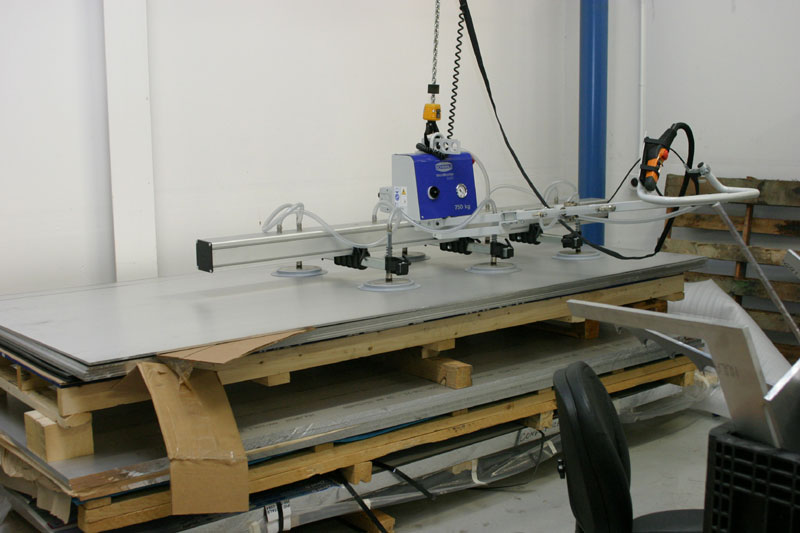
How do you lift a thousand-pound slab of aluminum?
With one of these.
The CNC mills the aluminum at 30,000 rpm and also polishes it to a mirror gleam,
although this finish remains unaltered for internal pieces only. External slabs are
finished further on a separate computerized polishing machine that controls the pressure
exerted on each piece and applies lubrication. This takes up to 15 minutes per piece,
depending on its size, and creates a finely grained appearance that practically commands
you to run your hand over it. In addition to giving each slab a uniform and attractive
finish, polishing also hardens the aluminum, making is less susceptible to scratching. A
special machine does the rounded edges of the baffle, this job being a bit trickier
because the machine does less of the work, relying on the operator's skill to create
pieces with uniform roundness.
After the cabinet parts are milled, they are bolted to racks for anodizing, which
happens outside the YG Acoustics factory. Yoav seems particularly fastidious about this
step, perhaps because he doesn't oversee it. The parts cannot touch on the rack, which
will affect the anodization. While YG Acoustics speakers are generally shown in black or
silver finish, other colors are possible, including blue, maroon and gold.
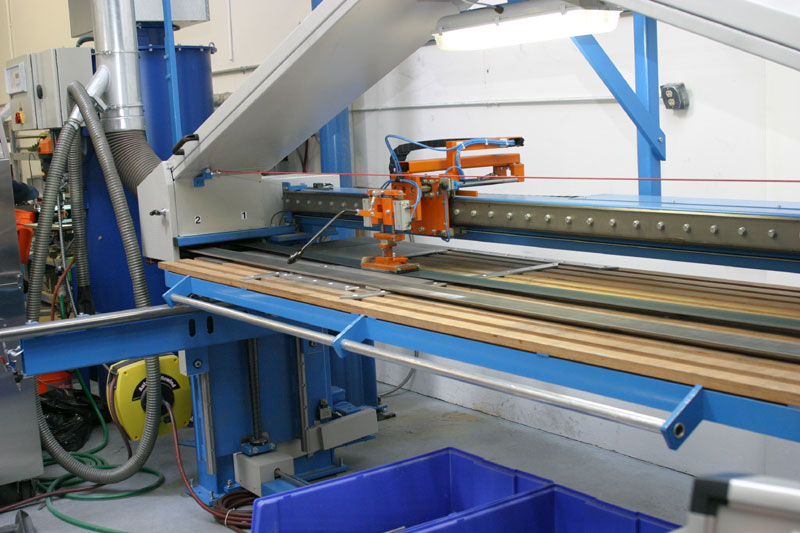
Finishing an aluminum side panel.
While the cabinet parts are being machined, polished and anodized, the crossovers are
built, each part specified by Yoav. The matching of crossover elements is meticulous.
"We essentially design and build a unique circuit for each driver we use," says
Yoav. There are bins of crossover parts across from the polishing machines, some holding
capacitors as large as sausages. All crossover components are made by Mundorf in Germany,
and Yoav works closely with the company to ensure that he gets just the parts he wants.
Assembly of the speakers happens in batches of five pairs at a time, which requires a
solid month of painstaking work. No glue or adhesives are used. The inner and outer
cabinet pieces are held together with "many, many screws," as Yoav put it, each
fastened by hand under tension, including the use of star washers with each screw. This
alone accounts for a considerable amount of the manufacturing time, a pair of Anat
Reference Studio speakers requiring over 4000 fasteners -- screws and washers. Almost all
of the screws are internal in order to give the speakers a sleek look. The only braces
inside the cabinets are those used to hold the walls and baffles together. There are no
damping materials in YG Acoustics speakers.
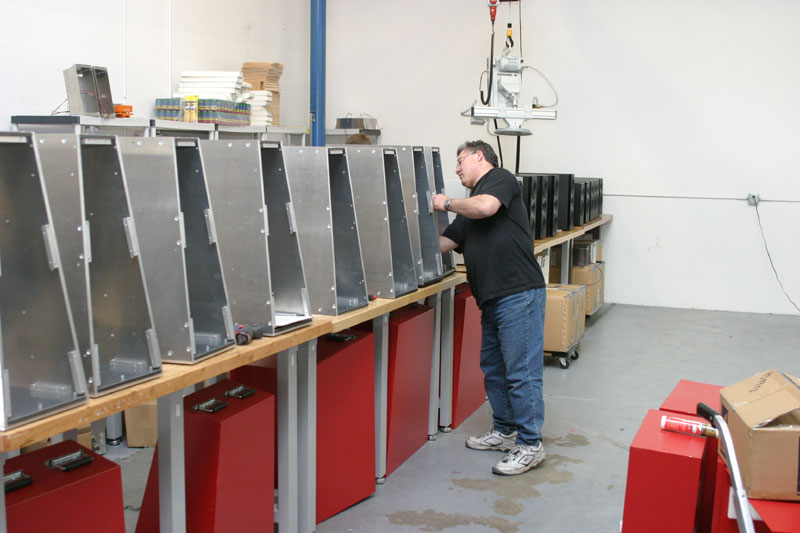
Assembly: have your screwdriver ready.
Drivers are so closely matched that the company needs an especially large stock of them
to ensure that matches can be found. After each speaker is assembled and before it is
packed, it is measured, a lift hoisting it into the air and away from as many reflection
points as possible. The speakers are shipped in formfitting folded-steel crates that, in
Yoav's words "simply protect the speakers better than any other way we've come
across."
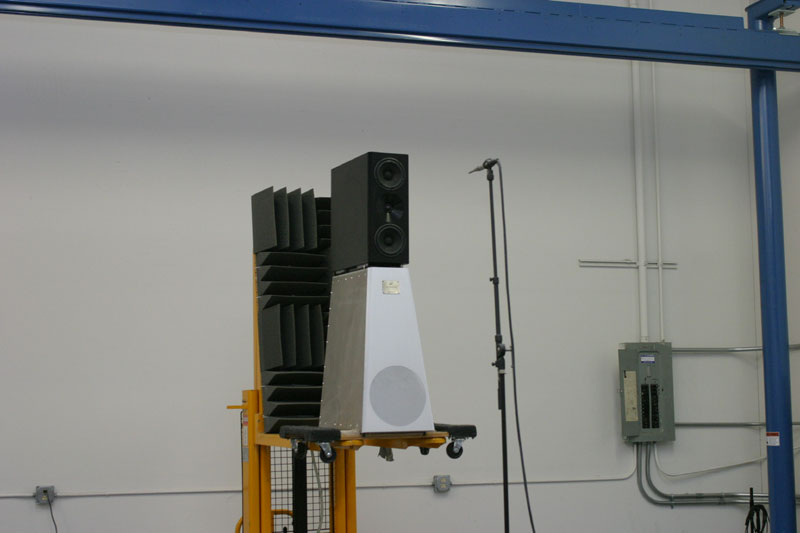
Speakers are lifted into the air and measured.
The amount of from-the-ground-up manufacturing that happens at YG Acoustics, with its
seven employees, is rather amazing -- and inspiring -- for what is a very small company.
It is possible for a small speaker manufacturer to have cabinets and crossovers
manufactured offsite, with assembly happening at the company's factory, but it's clear
that Yoav simply won't tolerate this. YG Acoustics doesn't make speaker stands or the
amplifiers for its powered woofer sections. It also doesn't manufacture its woofers or
midrange drivers (its tweeter is remanufactured in Arvada). That's the extent of the
outsourcing, electrical and small parts like binding posts and wire notwithstanding.
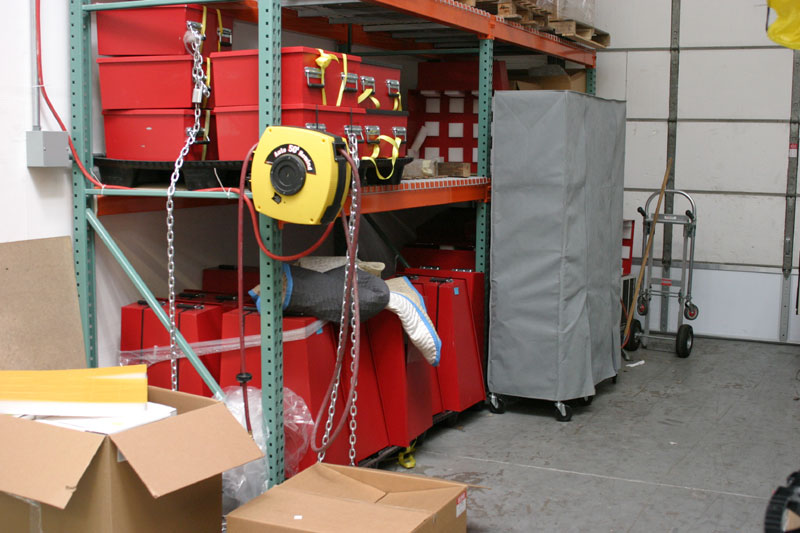
These red steel crates hold finished speakers.
I realized during my tour that the YG Acoustics factory is, in fact, an extension of
Yoav's exacting nature. As he walked about the factory, he not only explained the function
of each machine, but he demonstrated how to use it. A staid CEO locked to his desk he is
not, perhaps due to the nature of running a small manufacturing company, perhaps due to
the nature of being Yoav. Instead, he is truly excited by the work he and his staff do and
he wants to tell you about it -- down to each screw and star washer in his speakers.
Hearing and believing
After spending most of the day walking around the factory and generally seeing how YG
Acoustics makes its speakers, it was time to listen to some of them. My ears were still
plugged from the flight to Denver that day, so listening happened the next hectic morning.
With Yoav or Dick Diamond, YG Acoustics' director of sales and marketing, popping into and
out of the listening room between phone calls, I was given free rein, the morning turning
into afternoon as I played disc after disc that I had brought with me.
As I expected, the demo system was carefully crafted, another product of Yoav's
meticulous nature. A pair of Krell 400CX stereo amps vertically biamped Anat Reference II
speakers ($107,000 per pair). The speakers have a powered bass section, so the amplifiers
drove the tweeters and midrange drivers only. The preamp was a Krell Evolution 202, and
the digital front-end included the latest dCS Scarlatti DAC, transport and master clock.
Kimber Select interconnects and speaker cables connected everything, with Kimber power
cords and three Monster Power Pro 2000 line filters providing the juice to the speakers
and electronics. The room is rectangular, the system set up on the long wall. The walls
and ceiling were treated with sheets of acoustic foam, and the floor was carpeted. It was
a good listening space, but certainly not one designed from the ground up for its purpose.
Take away the treatments and it's not all that different from customers' own rooms.
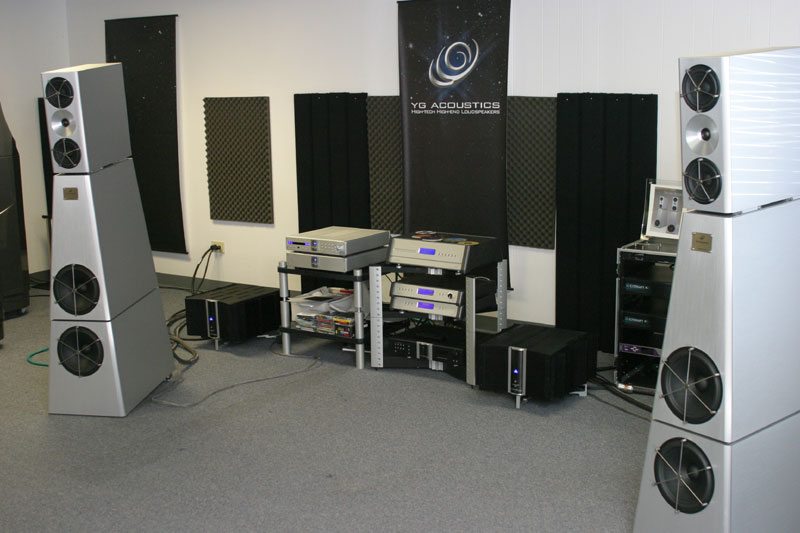
The listening room.
I've heard YG Acoustic speakers several times at shows, where the results were
decidedly mixed to my ears -- in keeping with the reputation of show sound, I guess. Here,
however, the Anat Reference IIs sounded leagues better than I have ever heard them --
warmer and fuller, more authoritative in the bass, and less peaky in the treble. The
midrange was resolving and almost lush, with female vocals, like the cuts from Lucinda
Williams I played, hanging in air at head height.
What I thought would be an hour of listening turned into three, interspersed with
conversations about setup and selling in a tough economy. Yoav offers his setup expertise
to customers in two ways. First, he will fly to their homes to set up his speakers; this
is a free service for those who buy Anat Reference IIs. Second, he will run a computer
simulation based on drawings sent to him that will tell owners where to place their
speakers themselves. YG Acoustics is committed to its dealers, working with each
individually to close potential sales, including visiting prospective customers on a
dealer's behalf if required. The company will also do something unique in my experience:
take trade-in speakers at the factory toward the purchase of new YG Acoustics speakers
from dealers. A pair of Wilson Audio Alexandria X-2s was onsite during my visit, these
traded in on a complete 5.1 system.
We also talked a bit about partnering equipment Yoav and Dick liked, and they praised
Kimber interconnects and speaker cables. This was no surprise, given that YG Acoustic
speakers use Kimber internal wiring. I was especially interested in asking Yoav about tube
products, specifically which ones he liked and thought worked well with his speakers. I've
never heard YG Acoustics speakers driven by tube amps, and for good reason: Their
below-average sensitivity and tough impedance make them unsure partners for tube amps.
However, Yoav said that his customers successfully use tube amps from Audio Research and
Conrad-Johnson, and I immediately thought of Convergent Audio Technology's amps as well.
After a long while listening to the Anat Reference II, I asked Dick and Yoav to swap in
the Kipod Studios ($38,000 per pair) that were off to one side. These also have a powered
bass section, but they are not nearly as tall as the speakers they replaced. In so many
ways, the sound of the two speakers was identical, especially in the midrange, which was
fleshy, articulate, and expressive.
Yoav Geva's path to manufacturing speakers in the US was unconventional, but the
results have fit successfully into an upper-end market that seems to grow each month with
competition -- some worthy and some questionable. A little insight into what happens every
day at YG Acoustics goes a long way toward understanding why these aluminum beauties cost
what they do.
...Marc Mickelson
marc@soundstage.com
|

